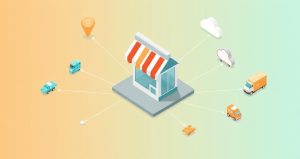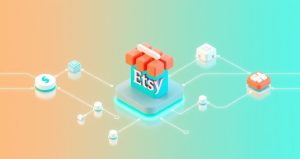Running a successful Etsy shop involves much more than creating beautiful products. It requires managing inventory, marketing, shipping, and customer service. As your business grows, these tasks can become overwhelming. This is where Etsy integrations come into play. These powerful tools connect your shop to third-party applications, automating repetitive tasks and streamlining your entire workflow. By leveraging the right integrations, you can save valuable time, reduce errors, and focus on what you do best: creating.
What Are Etsy Integrations?
Etsy integrations are specialized software applications that connect directly to your Etsy seller account through an Application Programming Interface (API). Think of an API as a secure bridge that allows different programs to communicate and share data. When you authorize an integration, you are giving it permission to access specific information in your shop, such as order details or listing data, to perform a designated function. This enables a seamless flow of information, automating processes that you would otherwise handle manually.
Key Categories of Etsy Integrations
The world of Etsy integrations is vast, with tools designed to solve nearly every challenge a seller might face. These applications generally fall into several key categories, each addressing a different aspect of your e-commerce business. Understanding these categories helps you identify which areas of your operation could benefit most from automation and enhancement. From production to post-sale accounting, there is likely an integration built to make your job easier and more efficient.
1. Print-on-Demand (POD) Services
Print-on-demand is a game-changer for artists, designers, and creators who want to sell custom merchandise without holding inventory. Etsy integrations with POD companies like Printful or Printify allow you to list products like t-shirts, mugs, and posters in your shop. When a customer places an order, the integration automatically sends the order details to the POD provider. They then print, pack, and ship the item directly to your customer, with your branding. This model significantly reduces financial risk and logistical headaches.
The profitability of this model depends on your pricing strategy. For example, if a POD provider charges $15 for a custom-printed hoodie and shipping, you might list it on Etsy for $40. After Etsy’s transaction and listing fees (roughly 10-15%), your net profit would be around $19-$21 per sale. The key is to balance competitive pricing with healthy margins. These Etsy integrations handle the entire fulfillment process, making it a scalable business model.
2. Shipping and Logistics Automation
Managing shipping is one of the most time-consuming tasks for any Etsy seller. Etsy integrations with shipping platforms like ShipStation, Pirate Ship, or Shippo can revolutionize this process. These tools import your orders from Etsy in real-time. From a single dashboard, you can compare carrier rates, purchase postage, and print shipping labels in bulk. Once a label is created, the integration automatically sends the tracking number back to Etsy and marks the order as shipped, notifying the customer.
This level of automation not only saves countless hours but also minimizes the risk of human error, such as typing an address incorrectly. Many of these services also offer discounted shipping rates that are not available directly through the post office, which can lead to significant cost savings for your business. For sellers with a high volume of orders, a reliable shipping integration is not a luxury; it is a necessity for maintaining efficiency and customer satisfaction.
3. Accounting and Financial Management
Keeping track of finances is critical for understanding your business’s health and preparing for tax season. Manually inputting sales, fees, and expenses is tedious and prone to errors. Accounting Etsy integrations connect your shop to software like QuickBooks, GoDaddy Bookkeeping, or Paper + Spark. These applications automatically import all of your sales data, along with Etsy fees, marketing costs, and other expenses. This gives you a clear, real-time picture of your revenue, costs, and profitability without manual data entry.
By categorizing your transactions automatically, these tools make it incredibly simple to generate profit and loss statements. When it comes time to file taxes, all the necessary information is organized and readily accessible. Using an accounting integration ensures accuracy and frees you from the stress of bookkeeping, allowing you to make smarter financial decisions based on reliable data. It is an essential tool for turning your creative passion into a sustainable business.
4. Marketing and Social Media Tools
Promoting your products is key to driving traffic and sales. Marketing Etsy integrations help automate your promotional efforts across various channels. Tools like Outfy or Vela can connect your Etsy shop to your social media accounts, such as Pinterest, Instagram, Facebook, and Twitter. You can schedule posts, create product collages, and automatically share new listings with your followers. This ensures a consistent marketing presence without you having to post manually every day.
These integrations are designed to make your listings more visible to a wider audience. For example, some tools specialize in optimizing your listings for Pinterest, a major source of traffic for many Etsy sellers. By automating the sharing process, you can maintain an active social media presence that continuously drives potential buyers back to your shop. This consistent promotion helps build brand awareness and can lead to a significant increase in sales over time.
5. Multi-Channel Inventory Sync
As your brand grows, you may decide to sell on platforms beyond Etsy, such as your own Shopify website or at in-person markets. Managing inventory across multiple channels can be a major challenge. This is where multi-channel Etsy integrations become invaluable. Services that sync inventory ensure that when an item sells on one platform, the stock level is automatically updated across all other channels. This prevents you from accidentally overselling an item that is no longer in stock.
This centralized inventory management is crucial for maintaining a professional reputation and avoiding customer disappointment. Platforms that offer this capability act as a central hub for your entire e-commerce operation, syncing not just inventory but often order data as well. It’s a sophisticated strategy that supports business growth by allowing you to expand your reach without creating logistical chaos, making it an essential integration for ambitious sellers.
Conclusion: A Strategic Advantage for Your Shop
In a competitive marketplace, efficiency is key to success. Etsy integrations are more than just convenient add-ons; they are strategic assets that empower you to automate, optimize, and grow your business. By taking over repetitive and time-consuming tasks related to production, shipping, accounting, and marketing, these tools free up your most valuable resource: your time. This allows you to focus on product development, customer engagement, and the creative vision that inspired you to start your shop in the first place.






